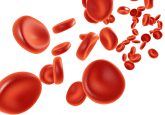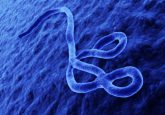Paper test strip device developed for rapid Ebola diagnosis

Researchers at the Massachusetts Institute of Technology (MIT; MA, USA) have developed a new paper strip test for Ebola in a project funded by the National Institute of Allergy and Infectious Disease (MD, USA). The device is similar to a pregnancy test and can rapidly detect Ebola, as well as yellow fever, dengue fever and other viral hemorrhagic fevers.
Presently, Ebola is diagnosed by collecting patient blood samples, which are then sent to a laboratory with the capacity to perform more advanced techniques such as PCR. While this method is accurate, it is also time consuming and relies on ready access to suitable laboratories, which can be problematic in resource-limited settings. This delay in diagnosis can prevent healthcare workers isolating potentially infectious individuals and giving them immediate treatment.
Kimberly Hamad-Schifferli, a visiting scientist in MIT’s Department of Mechanical Engineering and a member of the technical staff at MIT’s Lincoln Laboratory, explained the idea behind the research: “As we saw with the recent Ebola outbreak, sometimes people present with symptoms and it’s not clear what they have. We wanted to come up with a rapid diagnostic that could differentiate between different diseases.”
The new testing device adopts the technology used in pregnancy tests – lateral flow technology – which scientists have recently exploited for diagnosing strep throat and other bacterial infections. However, before the development of the new Ebola testing device, a multiplexing approach using multicolored nanoparticles had not been applied to simultaneously screen for multiple pathogens.
By using color-coded strips, the MIT device can distinguish among several diseases, unlike most existing paper-based technology. The researchers used triangular silver nanoparticles that adopt different colors depending on their size, and linked them to antibodies that detect Ebola, dengue fever and yellow fever. When a patient’s blood serum is placed on the strip, any viral proteins that correspond to the antibodies painted on the strips will be caught. The attached nanoparticles will then become visible to the naked eye, appearing red, orange or green depending on the virus detected.
Hamad-Schifferli explained the diagnosis: “When we run a patient sample through the strip, if you see an orange band you know they have yellow fever, if it shows up as a red band you know they have Ebola, and if it shows up green then we know that they have dengue.” The process takes about 10 minutes, allowing rapid diagnosis and swift action by healthcare workers.
The MIT researchers hope to obtain FDA approval so that they can begin using the device in areas where the Ebola outbreak is still ongoing.
Source: Quick test for Ebola.





